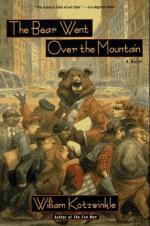|
This section contains 149 words (approx. 1 page at 300 words per page) |

|
The idea of an animal with human attributes is one of the oldest conventions of parallel forms in literary history.
Tales predating written literature abound, and the medieval beast fable, as well as allegorical narratives from the Middle Ages, are familiar examples of this genre.
More recently, the concept of Magical Realism, which is generally associated with Latin American writers like Gabriel Garcia Marquez, Isabel Allende, and Laura Esquivel, is applicable as well, although Kotzwinkle's methods are quite different from theirs, as befits a writer from another cultural position. Jonathan Swift's Gulliver's Travels (1726) presented a kind of animal/person amalgam in Part IV, where his horse/human combination "the Houyhnhnms" functioned as a model of deportment and admirable behavior, and Lemuel Gulliver's voyage to their land was also the culmination of a work of satirical invention that has remained as an exemplar of the genre.
|
This section contains 149 words (approx. 1 page at 300 words per page) |

|




